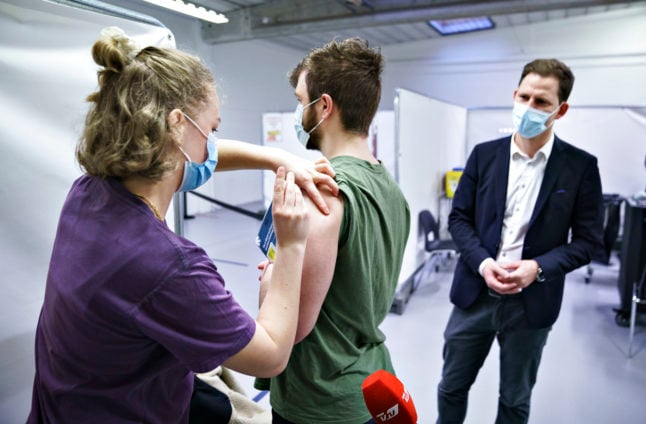A new Covid-19 booster jab will be available across Denmark from November 15th, but people outside eligible groups who want to be revaccinated will have to pay for it, the Danish Health Ministry said in a statement.
Denmark will offer bivalent Moderna and Pfizer vaccines (that is, the newer vaccines targeting omicron variants) for sale to vendors including general practitioners and pharmacies.
“Vaccination will [after November 15th] be available for purchase to members of the public from GPs, pharmacies and others who choose to take part in the arrangement,” the ministry said.
READ ALSO: Covid-19: Denmark expects to bring updated jab into vaccination programme
While the State Serum Institute will sell the doses to vendors at cost price, it’s up to vendors how much they’ll charge patients for the jab. This also applies with other types of vaccination, specifically vaccination for travel purposes.
“The purchase price for the consumer is set by individual vaccinators, as is the practice with, for example, travel vaccines. The overall price of vaccination may therefore vary,” the ministry said.
The first doses of the Covid-19 booster will be received by vendors on November 14th ahead of a November 15th start date.
A limit has been placed on the number of vaccines to be released for private sale in order to ensure sufficient supply for at-risk persons.
Denmark’s autumn 2022 Covid-19 vaccination programme began on September 15th, when care home residents and people aged 85 and over were invited for a booster jab.
All people aged 50 and over were offered free vaccination from October 1st.
Other groups for which vaccination is recommended include those who are pregnant, work in the health and elderly care sectors, or are at heightened risk of serious illness.
These groups are not automatically offered a free booster: they receive information from their workplaces or must contact health services independently to check eligibility and arrange a vaccination. This can be done via the vacciner.dk and Danish Health Authority (Sundhedsstyrelsen) websites.



 Please whitelist us to continue reading.
Please whitelist us to continue reading.
The one seeming to be offered at the pharmacies to non-risk groups is not the updated one, but the original pfizer one, FYI.